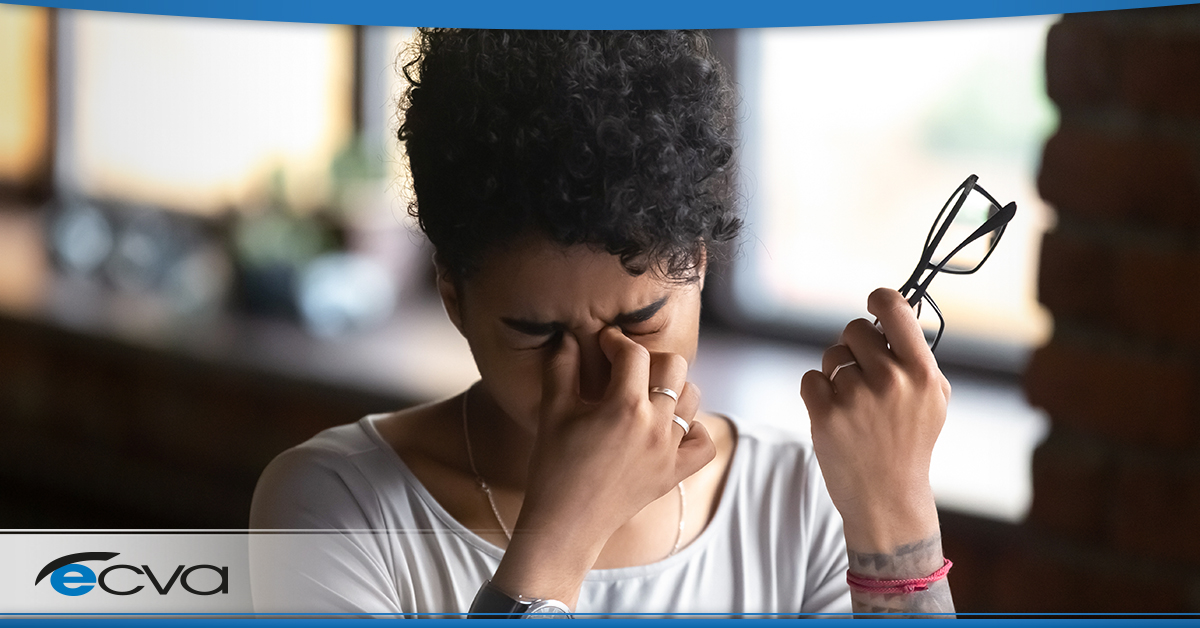Many people know that vision changes can occur at any time. However, if your vision is declining year after year or suddenly takes a turn for the worst, you may wonder why it’s happening.
Here is a look at common reasons for declining vision, as well as the symptoms you may experience.
Aging
As people age, their visual acuity typically decreases, especially when it comes to near-vision. Often, this process is unavoidable. Additionally, it’s normal for vision to decline further as time passes.
Often, age-related vision changes begin around middle age, commonly among adults over 40. During that time, presbyopia – a loss of lens flexibility – can alter visual acuity, particularly when viewing nearby objects. However, some may not see shifts until they’re far beyond 40, while others may see these changes begin earlier.
Usually, the most common symptoms of age-related changes are trouble reading small print, fatigue after reading, holding items farther away to read, needing brighter light, and squinting.
Injury
An eye injury can lead to a range of physical changes that may impact your vision. If the optic nerve is damaged, it can cause significant vision loss. Similarly, an injury-related retinal detachment may cause a rise in the number of floaters, bright light flashes, and blurriness.
Eye injuries can also cause other kinds of damage, many of which require quick treatment to prevent or reduce vision loss. Since that’s the case, fast action is always recommended, including seeing your eye health provider for an immediate assessment.
UV Damage
UV light harms the eyes, potentially leading to vision changes. Often, the damage begins during childhood, a period when most people aren’t as cautious when it comes to eye health. However, it may not be apparent until adulthood. Additionally, choices as an adult also influence the equation.
In most cases, UV damage leads to blurriness. Eye pain, redness, and light sensitivity are also symptoms you may experience.
Eye Strain
Due to the rise of digital devices, eye strain is surprisingly common, and it can lead to certain vision changes. When people view screens, they tend to blink less. Additionally, they’re keeping their focus on a specific distance.
In most cases, tiredness or fatigue is the most apparent symptom, coupled with dry, itchy, or burning eyes. However, you may experience headaches, light sensitivity, and soreness, too.
Cataracts
Technically, cataracts are another age-related reason for vision decline. As proteins in the lens break down, they can cloud the lens, leading to blurry vision.
Along with being very common, cataracts are typically incredibly treatable, particularly when caught early. Some signs of cataracts include blurriness, glare, halos, and faded or yellowed colors.
Glaucoma
Glaucoma is a condition involving elevated pressure in the eye, leading to damage to the optic nerve. As the damage occurs, peripheral vision typically declines first. Blurriness and halos may also develop, as well as trouble seeing in low-light conditions.
In some cases, glaucoma is also accompanied by pain. However, that isn’t always the case.
Since vision changes are potentially caused by a range of conditions, including some severe problems that can lead to permanent vision loss, it’s best to see your eye health provider whenever you notice a shift. Additionally, attending your annual appointments ensures your provider can monitor your eye health and take quick action should they spot an issue that’s yet to result in symptoms.
At ECVA, the safety and health of our patient’s eyes are our priority. If you are experiencing vision changes or simply haven’t seen your eye care provider in the past year, the ECVA team is here to help. Schedule an appointment at your closest ECVA clinic today.







